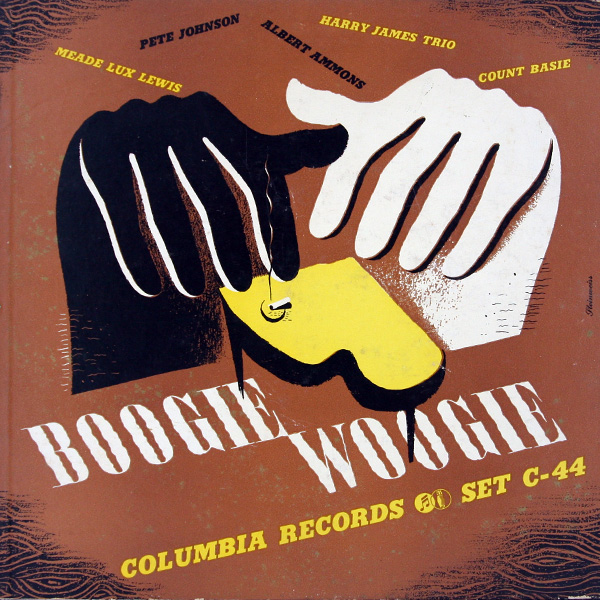|
Boogie-woogie is a style of piano-based blues that became popular in the late 1930s and early 1940s, but originated much earlier, and was extended from piano, to three pianos at once, guitar, big band, and country and western music, and even gospel. Whilst the blues traditionally depicts a variety of emotions, boogie-woogie is mainly associated with dancing. The lyrics of one of the earliest hits, "Pinetop's Boogie Woogie", consist entirely of instructions to dancers.
It is characterized by a regular bass figure, in the left hand. The bass figure is transposed according to the chord changes.strictly a solo piano style, but is also used to accompany singers and as a solo part in bands and small combos. It is sometimes called "eight to the bar", as much of it is written in common time (4/4) time using eighth notes (quavers) (see time signature). The chord progressions are typically based on I - IV - V - I (with many formal variations of it, such as I/i - IV/iv - v/I, as well as chords that lead into these ones.
For the most part, boogie-woogie tunes are twelve-bar blues, although the style has been applied to popular songs like "Swanee River" and hymns like "Just a Closer Walk with Thee." (Wikipedia)
|













